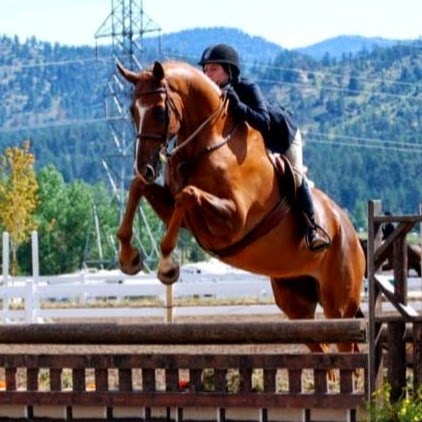Elizabeth A Peacock
age ~54
from Fuquay Varina, NC
- Also known as:
-
- Elizabeth Anne Peacock
- Elizabeth A Lee
- Elizabeth P Lee
- Elizabet H Lee
- Elizabeth A Hamrick
- Liz Lee
- Eric Lee
- Phone and address:
-
924 Greenbriar Dr, Fuquay Varina, NC 27526
9195673391
Elizabeth Peacock Phones & Addresses
- 924 Greenbriar Dr, Fuquay Varina, NC 27526 • 9195673391
- Apex, NC
- Wilmington, NC
- 702 7Th St, Erie, PA 16502
- Chagrin Falls, OH
- Raleigh, NC
- Edinboro, PA
- Wade, NC
Medicine Doctors

Elizabeth Ann Peacock
view sourceSpecialties:
Pathology
Anatomic Pathology & Clinical Pathology
Forensic Pathology
Anatomic Pathology & Clinical Pathology
Forensic Pathology
Education:
Texas Tech University(1987)
Resumes

Appraiser At V. I. Appraisal Service
view sourcePosition:
Appraiser at V. I. Appraisal Service
Location:
Virgin Islands (U.S.)
Industry:
Real Estate
Work:
V. I. Appraisal Service
Appraiser
Appraiser

Enviromental Educator
view sourceLocation:
Fuquay Varina, NC
Industry:
Education Management
Work:
City of Raleigh Parks
Nature Instructor
Nc Department of Public Instruction Nc State University
Resource Tagger, Elementary Science
Wake County Public School System Feb 2006 - Jun 2010
Elementary Science Coordinating Teacher
Prairie Ridge Ecostation Mar 2007 - Mar 2008
Weekend Captain
Wake County Public School System Aug 1998 - Feb 2006
Elementary Teacher
Nature Instructor
Nc Department of Public Instruction Nc State University
Resource Tagger, Elementary Science
Wake County Public School System Feb 2006 - Jun 2010
Elementary Science Coordinating Teacher
Prairie Ridge Ecostation Mar 2007 - Mar 2008
Weekend Captain
Wake County Public School System Aug 1998 - Feb 2006
Elementary Teacher
Education:
University of North Carolina 2008 - 2010
Master of Education, Masters Edinboro University of Pennsylvania 1992 - 1996
Bachelors, Bachelor of Science, Elementary Education Olney Friends School
Master of Education, Masters Edinboro University of Pennsylvania 1992 - 1996
Bachelors, Bachelor of Science, Elementary Education Olney Friends School
Skills:
Elementary Education
Classroom Management
Lesson Planning
Classroom
Differentiated Instruction
Curriculum Design
Curriculum Development
K 12
Educational Leadership
Literacy
Educational Technology
Tutoring
Teacher Training
Special Education
Instructional Technology
Staff Development
Teaching
Language Arts
Social Studies
Smartboard
Early Childhood Education
Common Core State Standards
Data Driven Instruction
Reading Intervention
Guided Reading
Educational Consulting
Science Education
Teacher Mentoring
Science
21St Century Skills
Curriculum Assessment
Project Based Learning
Dibels
Inquiry Based Learning
Pedagogy
Integrating Technology In the Classroom
Mathematics Education
Curriculum Mapping
Instructional Design
Classroom Management
Lesson Planning
Classroom
Differentiated Instruction
Curriculum Design
Curriculum Development
K 12
Educational Leadership
Literacy
Educational Technology
Tutoring
Teacher Training
Special Education
Instructional Technology
Staff Development
Teaching
Language Arts
Social Studies
Smartboard
Early Childhood Education
Common Core State Standards
Data Driven Instruction
Reading Intervention
Guided Reading
Educational Consulting
Science Education
Teacher Mentoring
Science
21St Century Skills
Curriculum Assessment
Project Based Learning
Dibels
Inquiry Based Learning
Pedagogy
Integrating Technology In the Classroom
Mathematics Education
Curriculum Mapping
Instructional Design

Elizabeth Peacock
view source
Elizabeth Peacock
view source
Elizabeth Peacock
view sourceLocation:
United States

Elizabeth Peacock
view sourceLocation:
United States
Flickr
Youtube
Classmates

Elizabeth Mazza (Peacock)
view sourceSchools:
Rice Memorial High School South Burlington VT 1964-1968
Community:
Mary O'brien

Elizabeth Peacock (Hagen)
view sourceSchools:
Carson City Seventh Day Adventist School Carson City NV 1978-1979, Brockbank Junior High School Magna UT 1979-1980
Community:
Bonnie Hardman

Elizabeth Peacock
view sourceSchools:
Beitel Elementary School Laramie WY 1988-1990, Slade Elementary School Laramie WY 1990-1993, Velma Linford Elementary School Laramie WY 1993-1994, Indian Paintbrush Elementary School Laramie WY 1994-1995, Laramie Junior High School Laramie WY 1995-1998
Community:
Merridy Allen

Elizabeth Peacock
view sourceSchools:
South Montgomery High School New Market IN 2002-2006
Community:
Jayne Wright, Sheilah Gravens, Lisa Shake, Tresha Flaurr

Elizabeth Peacock
view sourceSchools:
Cardinal Stritch High School Oregon OH 1997-2001
Community:
Monica Heckel, Linda Lambert, Robert Wagner, Keith Crane

Elizabeth Elizabeth Stewa...
view sourceSchools:
Picture Butte High School Picture Butte Azores 1970-1975
Community:
Siona Doyle, Betty Schile

Elizabeth Peacock
view sourceSchools:
Thoreau Elementary School Thoreau NM 1988-1993
Community:
Penny Elkins, Brianne Brown

Elizabeth Peacock | Bullo...
view source
Mandy Elizabeth Peacock
view source
Elizabeth Peacock
view source
Elizabeth Paige Peacock
view source
Elizabeth Peacock
view source
Elizabeth Peacock
view source
Elizabeth Peacock
view source
Elizabeth Diane Peacock
view source
Elizabeth Peacock
view sourceNews

Polar Bears migrating north as ice melts, says researcher
view source- Sea ice is like a moving sidewalk and they travel with it, according to Elizabeth Peacock. As the ice melts, and the density of ice is found in different areas then more bears are likely to move. As more bears are likely to move, it creates a situation where more bears are led to leave. Polar be
- Date: Jan 09, 2015
- Category: Sci/Tech
- Source: Google

The Great Polar Bear Migration
view source- traverse the long stretches of ocean between hunting and mating grounds.Study leader Elizabeth Peacock explains Instead of sort of random movements of bears across the Arctic that we found in sort of the more ancient historical picture, we found directional movement towards the Canadian Archipelago.
- Date: Jan 08, 2015
- Category: Sci/Tech
- Source: Google

Polar bears heading to Arctic islands for more food, new research suggests
view source- paper, published Jan. 6 in the online journal Plos One, whose authors include former Government of Nunavut polar bear biologist Elizabeth Peacock, provides genetic evidence that also points to movement by polar bears to the Arctic islands, where the polar bears can find better seal-hunting conditions.
- Date: Jan 08, 2015
- Category: Sci/Tech
- Source: Google

Polar Bears Stand Up to Climate Change
view source- "In general, polar bears move with their habitat," Elizabeth Peacock, a US Geological Survey (USGS) researcher, explained to Discovery News. "Sea ice is like a moving sidewalk and they travel with it," she continued. "Bears likely move towards places with better access to prey and mates."
- Date: Jan 08, 2015
- Category: Sci/Tech
- Source: Google

Are Polar Bears Saving Themselves?
view source- Individual animals are not marching northward en masse, according to Elizabeth Peacock, a U.S. Geological Society researcher who recently studied polar bears. Rather, the population distribution shifts appear to be gradual and subtle.
- Date: Jan 08, 2015
- Category: Sci/Tech
- Source: Google
Googleplus

Elizabeth Peacock
Work:
UCSD Anthropology (2011)
SWCCD Behavioral Sciences (2011)
SWCCD Behavioral Sciences (2011)
Education:
University of California, San Diego - Ph.D., anthropology, University of California, San Diego - M.A., anthropolopgy, University of Kansas - B.A., anthropology, political science
Tagline:
Socioculturalinguistic anthropologist

Elizabeth Peacock
About:
I am not the Elizabeth Peacock from the popular game and movie Clue.

Elizabeth Peacock

Elizabeth Peacock

Elizabeth Peacock

Elizabeth Peacock

Elizabeth Peacock (Liz)

Elizabeth Peacock
Myspace
Get Report for Elizabeth A Peacock from Fuquay Varina, NC, age ~54

















